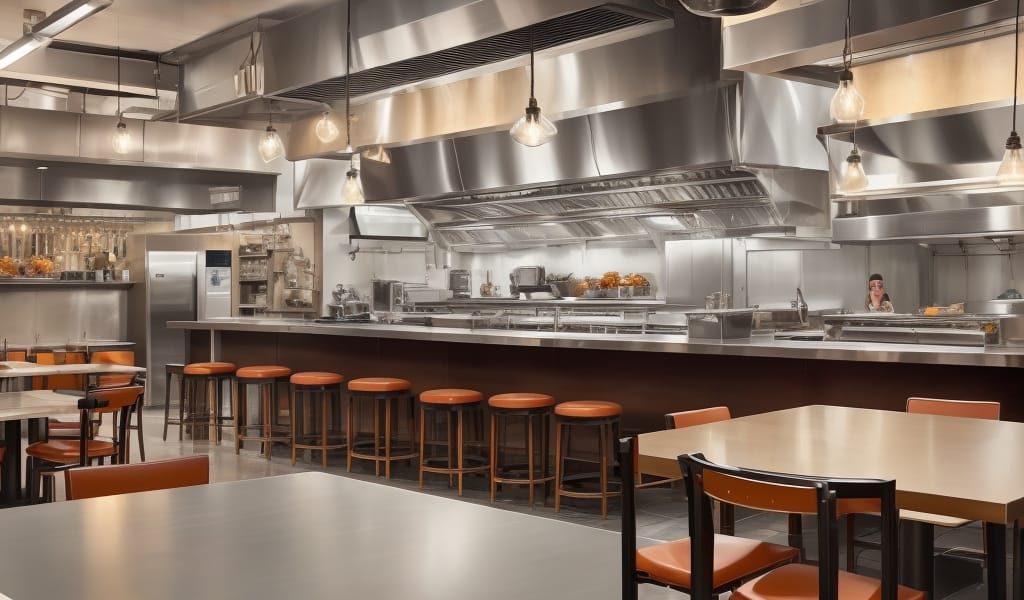Key Takeaways:
- Understand your target market and tailor your menu, pricing, and ambiance accordingly to avoid early restaurant failure.
- Closely manage cash flow and expenses, ensuring you have a sufficient financial buffer for unexpected costs and slow periods.
- Invest in quality staff training to provide excellent customer service, fostering customer loyalty and positive reviews.
- Regularly review and adjust your restaurant’s business plan according to customer feedback and market trends for startup survival.
- Implement effective marketing strategies, including leveraging social media platforms, to increase visibility and attract new customers.
Why Most Restaurants Fail in Year One (And How You Can Survive)
Opening a restaurant is a thrilling venture, filled with passion, creativity, and dreams of success. Yet, the harsh reality reveals that many new restaurants close their doors within their first year. According to industry studies, around 60% of restaurants fail in their first year alone. But what causes these promising establishments to falter, and how can you avoid becoming another statistic?
Understanding the common pitfalls and proactively implementing practical strategies can significantly improve your restaurant’s chances of survival. This article explores the primary reasons behind restaurant failures and offers actionable tips for startup survival in the competitive food and beverage (F&B) industry.
Common Reasons Behind Restaurant Failure
1. Poor Location Choice
Choosing the right location is critical for restaurant success. An inconvenient or obscure location can severely limit customer traffic, no matter how exceptional your menu is. Factors such as limited parking, low foot traffic, or unsuitable neighborhood demographics often contribute to early restaurant closures.
For example, a high-end gourmet restaurant placed in an area dominated by fast-food outlets and budget shoppers will struggle to attract its ideal clientele.
2. Insufficient Capital and Poor Financial Planning
Underestimating initial startup costs and operating expenses is a common mistake among new restaurateurs. Many restaurants fail due to running out of cash within the first few months because of unexpected expenses, delays, or slower-than-anticipated sales growth.
Case in point: a recent study found that nearly half of restaurant startups underestimate their monthly expenses by 20-30%, leading directly to financial shortfalls.
3. Lack of Clear Concept and Identity
A successful restaurant requires a clearly defined concept and brand identity. Restaurants without a unique selling proposition or distinct identity often blend into the competition and fail to attract loyal customers. Your concept should guide everything from menu design and decor to marketing strategies.
A restaurant that attempts to offer everything to everyone—such as simultaneously serving Italian, Chinese, and Mexican dishes—confuses customers and dilutes its brand identity, leading to failure.
4. Poor Quality or Inconsistent Food and Service
Inconsistency in food quality and service standards is a quick way to lose customer trust and loyalty. Customers expect reliability in taste, portion size, and overall dining experience. Restaurants that fail to maintain consistent standards quickly lose repeat customers and struggle with negative reviews.
One prominent example is a high-profile burger chain that saw rapid early expansion but later suffered losses due to inconsistent food quality across locations, causing many branches to close within their first year.
5. Inadequate Marketing and Online Presence
Many startup restaurants fail to realize the importance of effective marketing and maintaining a robust online presence. Without strategic marketing, attracting initial customers and creating brand awareness becomes incredibly challenging. Restaurants without a professional website, social media profiles, or a presence on key review sites often fail to generate sufficient awareness and customer traffic.
Practical Tips for Startup Survival in the Restaurant Industry
Conduct Thorough Market Research
Before opening your restaurant, it’s essential to research and understand your target market thoroughly. This includes analyzing local competitors, customer preferences, demographics, and spending habits. Detailed market research helps you fine-tune your restaurant concept, menu offerings, pricing strategies, and marketing efforts.
- Identify your ideal customer profile and tailor your concept accordingly.
- Study successful competitors to understand what works in your area.
- Assess the potential demand for your restaurant concept through surveys or focus groups.
Create a Realistic Financial Plan
Proper financial planning is crucial for restaurant survival. Develop a comprehensive budget that includes startup costs, monthly operating expenses, and a contingency fund for unexpected costs. Be realistic about your revenue projections, and always plan for the worst-case scenario to ensure financial stability during your initial months.
- Include at least six months of operating expenses in your initial capital.
- Regularly review financial forecasts and adjust spending accordingly.
- Work with an accountant experienced in the restaurant industry to develop accurate financial plans.
Select the Right Location Strategically
Your restaurant’s location significantly impacts its success. Prioritize visibility, accessibility, and foot traffic. Consider factors such as parking availability, neighborhood demographics, local competition, and overall convenience for your target customers.
- Visit potential locations at different times to understand traffic patterns.
- Consider lease terms carefully—avoid overly expensive or restrictive leases.
- Evaluate proximity to complementary businesses or attractions that draw foot traffic.
Develop a Distinctive Brand and Concept
A compelling brand identity helps your restaurant stand out and attract your target audience. Clearly define your restaurant’s concept, cuisine style, ambiance, and unique selling points. Consistently communicate your brand message through decor, menu design, staff uniforms, and marketing materials.
- Focus on a specialized niche instead of trying to cater to everyone.
- Create a memorable name, logo, and visual branding strategy.
- Ensure your brand story resonates emotionally with your target customers.
Invest in Staff Training for Consistent Quality
Quality and consistency are vital in the restaurant business. Invest in thorough staff training to ensure that every customer experiences consistent service and food quality. Regular training programs and clear operational standards help maintain your restaurant’s reputation and encourage repeat visits.
- Create detailed operational manuals and checklists for staff.
- Conduct regular taste tests and service audits to maintain consistency.
- Encourage staff feedback and continuous improvement practices.
Leverage Effective Marketing and Online Presence
In today’s digital age, effective online marketing is essential for attracting and retaining customers. Build a professional website, create engaging social media profiles, and actively manage your presence on restaurant review sites. Encourage satisfied customers to leave positive reviews online, and promptly respond to negative feedback professionally to demonstrate your commitment to quality.
- Utilize social media platforms to showcase your dishes, specials, and events.
- Engage with your community through targeted local promotions and events.
- Consider partnering with local influencers or bloggers to boost visibility.
Monitor and Adapt to Industry Trends
The restaurant industry constantly evolves, influenced by changing consumer preferences, economic conditions, and technological advancements. Successful restaurants proactively monitor industry trends and remain flexible, adapting their offerings, operations, and marketing strategies as needed.
- Regularly read industry publications and attend trade events.
- Incorporate customer feedback into menu and service improvements.
- Stay informed about emerging technologies that enhance operations and customer experience.
Conclusion
While restaurant failure in the first year remains common, understanding the key reasons behind it and proactively addressing these challenges can significantly enhance your chances of success. By conducting thorough market research, selecting the right location, crafting a clear concept and brand identity, planning finances realistically, ensuring consistent food and service quality, and leveraging effective marketing strategies, you can position your startup restaurant to thrive beyond its critical first year.
Remember, the restaurant business demands passion, resilience, and continuous adaptation. By staying informed, proactive, and responsive, you can confidently navigate the challenges and build a thriving establishment that stands the test of time.






Comments
Be the first to comment on this article.